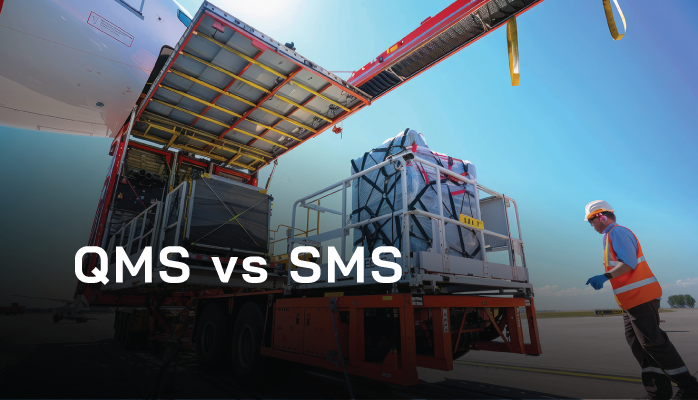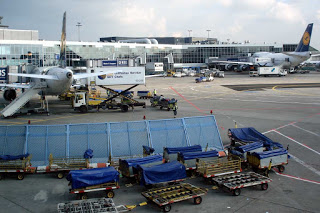Goals of an Aviation SMS

We know that aviation safety management is a system of safety management activities.
Policies, processes, and procedures are created to systematically approach
- hazard identification,
- risk monitoring, and
- prevention of accidents and serious incidents.
The important point with an aviation safety management system (SMS) is creating an organized structure to rely on, rather than a person to rely on. One of the biggest causes of failure for aviation SMS is the sudden departure of the safety manager.
How do you mitigate the loss of your safety manager? Do you have a backup plan?
Related Aviation Safety Manager Articles
- Why/When Aviation Safety Managers Don't Need Operational Experience
- How Safety Managers Increase Their Power in Aviation SMS
- 5 Times Documentation Saves Safety Managers in Aviation SMS
The Goal of Aviation SMS
The primary goal, of course, is to keep people safe and prevent damage to equipment and the environment. From the safety manager's perspective, the goal of the SMS is to prevent "The Accident."
From the FAA's perspective, the objective of the SMS is to
- proactively manage safety,
- identify potential hazards,
- determine risk, and
- implement control measures to mitigate the risk.
The FAA envisions operators being able to use all of the components of SMS to enhance a carrier’s ability to identify safety issues and spot trends before they result in a near-miss, incident, or accident.
Source: Federal Register / Vol. 80, No. 5 / Thursday, January 8, 2015 / Rules and Regulations
Adopting SMS in the aviation organization is also a smart financial decision. Preventable accidents cost airlines and airports money – sometimes a substantial amount of it. Loss of capital due to accidents comes at the hands of either-
- Litigation
- Loss of assets to produce revenue
- Damage
- Increased insurance costs
- Seizure of an organization’s assets.
Implementing an SMS and preventing such accidents consequently circumnavigates the financial dangers as well. Besides financial benefits, an organization can expect additional benefits, including:
- Improved morale and engagement as they become protected from management when self-reporting;
- Enhance safety reputation as seen by customers;
- Avoiding the unrecoverable sunk costs of dealing with accidents and incidents; and
- Improved resource utilization from the refinement of business processes;
In many ways, aviation safety management systems are rather similar to quality management systems as well. Specifically, both attempt to improve business processes by monitoring operations and reacting to substandard performance. To call them similar, though, would be to take SMS and QMS at superficial, face value.
Related QMS and SMS Articles
- What Are Differences of Aviation Safety Management Systems (SMS) and QMS Programs
- 5 Easy Ways to Combine QMS and SMS in Aviation Operations
- How Integrating QMS and SMS Will Improve Aviation Safety Audit Performance
What a Quality Management System Is

Quality management systems (QMS) are focused primarily on customers and business objectives. For a QMS to reach its objectives, it naturally needs to clarify:
- An organization’s structure
- Policies and procedures for a business
- Planning
- Distribution of resources
- Quality management
In short, QMS programs are focused on making an organization efficient and maximizing its integrity in terms of providing quality services/products to customers. QMS program's main focus is internal.
How QMS and SMS Are Similar
As said, QMS and SMS are very similar on the surface. They both focus heavily on:
- Creating policies and procedures
- Clarifying organizational structure
- Increasing effectiveness
- Creating a system to rely on as a means of integrity rather than a person/people to rely on
Both QMS and SMS use a similar systematic structure for approaching their respective concerns. As said, that system/structure is simply the creation of a documentable framework for an organization to lean on.
Such an approach makes wonderful sense. During employee turnover, or when management changes, an organization does not necessarily suffer because, ideally, additional employees and/or management can simply step in and lean on the system as well.
Moreover, both SMS and QMS demonstrate a documentable commitment to an organization’s concern and integrity.
But beyond this 32,000-foot view, QMS and SMS programs differ significantly.
Why QMS and SMS Are Different
The primary difference between QMS and SMS – and a big enough difference that SMS and QMS should really not be considered as “siblings” – is their primary concern.
QMS has a primary concern that is business-oriented. SMS programs are primarily concerned with managing safety.
To illustrate the difference in several examples, consider several situations.
Both QMS and SMS will have organization charts. However, these org charts should and will probably look very different. The responsibilities and flow of business-related information will be most efficiently dealt with in a way that is much different from safety-related information. If safety-related information were to travel through the same channels as a QMS’s org chart, the SMS program would suffer because many people in that information channel would be irrelevant.
QMS systems may have goals and objectives that conflict with a safety program’s standards of safety, such as dealing with employees’ work hours and allocation of resources.
Such examples will come up repeatedly. While their methods are similar, the goals of SMS and QMS are aimed at entirely different ends.
Can QMS Replace SMS?
A somewhat common misnomer is that an organization doesn’t need an aviation SMS because it has a robust QMS program. As said, however, SMS and QMS have very different goals and objectives, and QMS absolutely cannot replace a regulatory-mandated SMS.
Rather, a safety program should be viewed as a primary structure in the overall QMS. QMS cannot provide a level of quality without safety as well – thus an SMS compliments a QMS very well.
So while we can't really look at QMS and SMS as siblings, I think a much better way to look at the relationship between both is as a partnership. That's a fancy way of saying they work well as a combination - though others may disagree.
Final Thought: Using QMS to Demonstrate SMS
In general, QMS is probably a better-understood topic in larger organizations that deal with ISO 9001.
Resistance by management to SMS implementation is always a hurdle that safety managers jump over. Using the fundamental principles of QMS programs – namely the creation of a system through policies, procedures, and organizations – to demonstrate how SMS programs can be equally effective is a great way to get management on board.
In conclusion, the important thing is to keep in mind and show that the majority of aviation SMS requirements are within the structure of QMS. Integrating SMS and QMS makes great both business and financial sense: SMS is a fantastic addition to super-charge a QMS program.
Have You Read
- How to Reduce Resistance to Aviation SMS With Difficult Employees
- 3 Tips to Discover Resistance to Aviation SMS - With Checklists
- Checklist to Quantify Resistance to Your Aviation SMS
Last updated May 2025.







